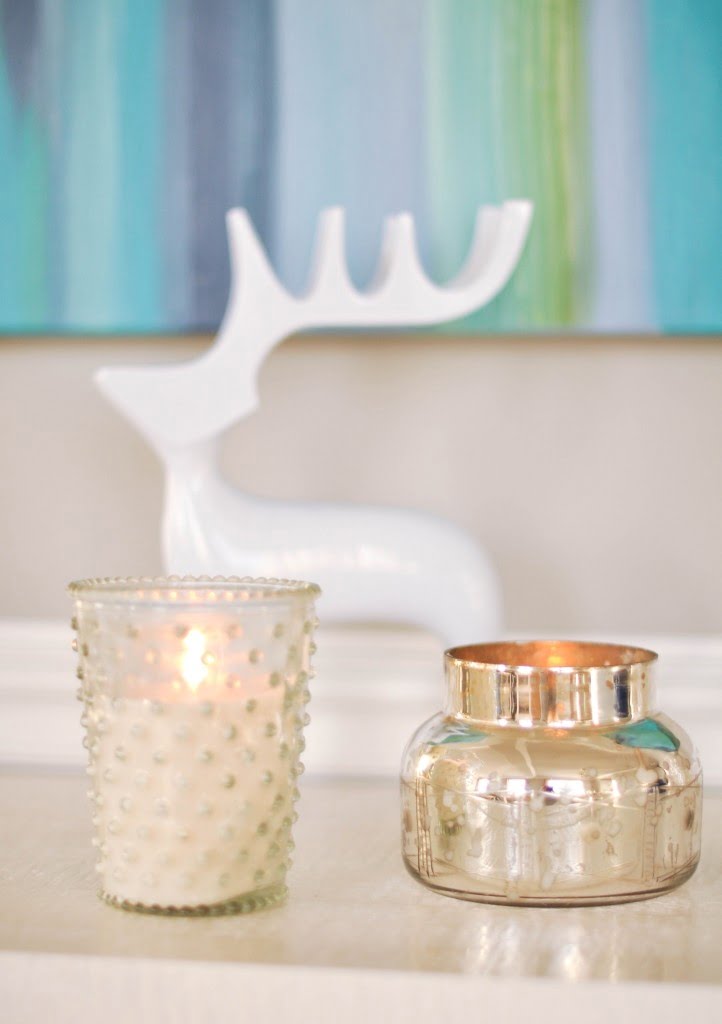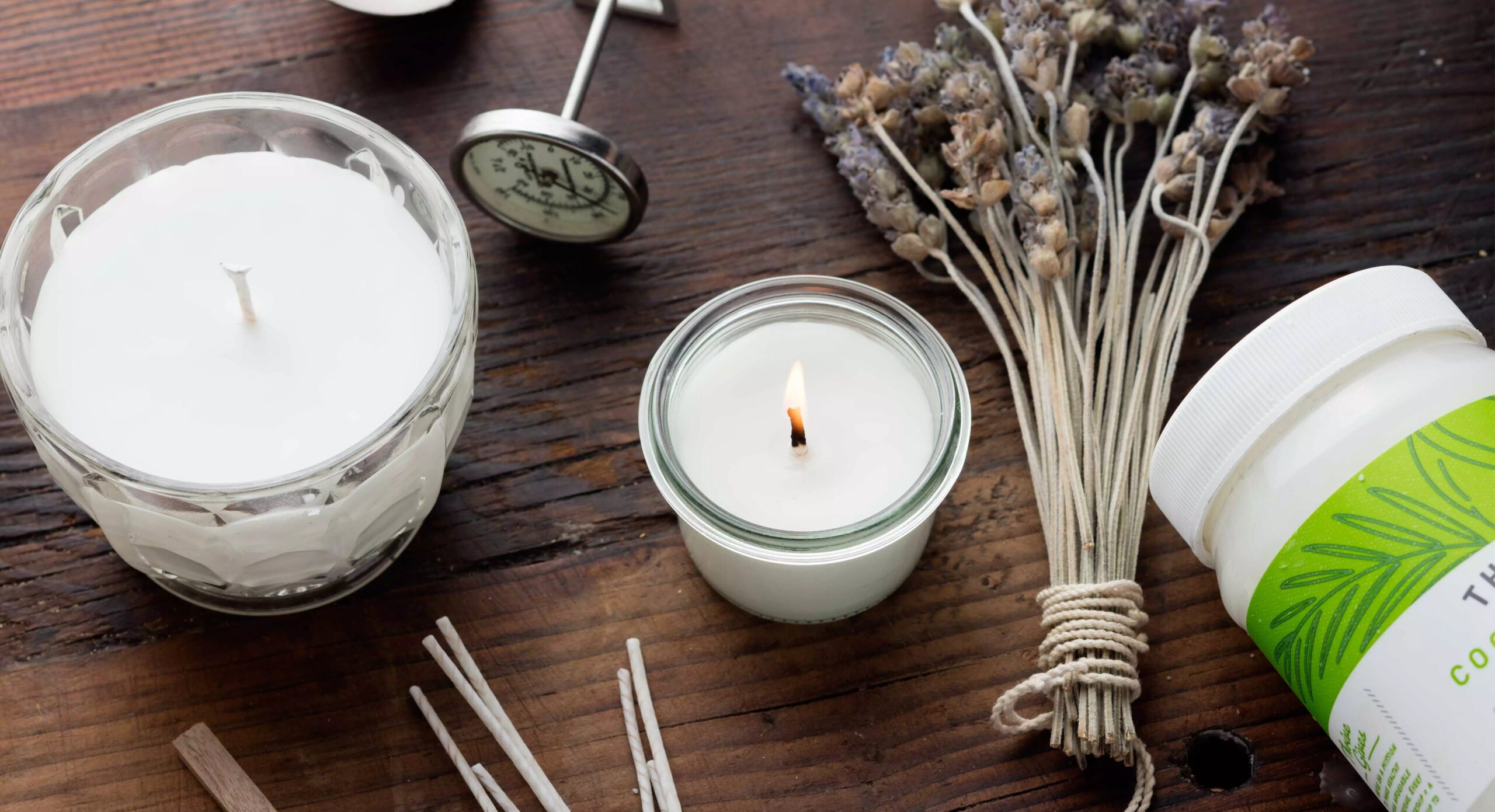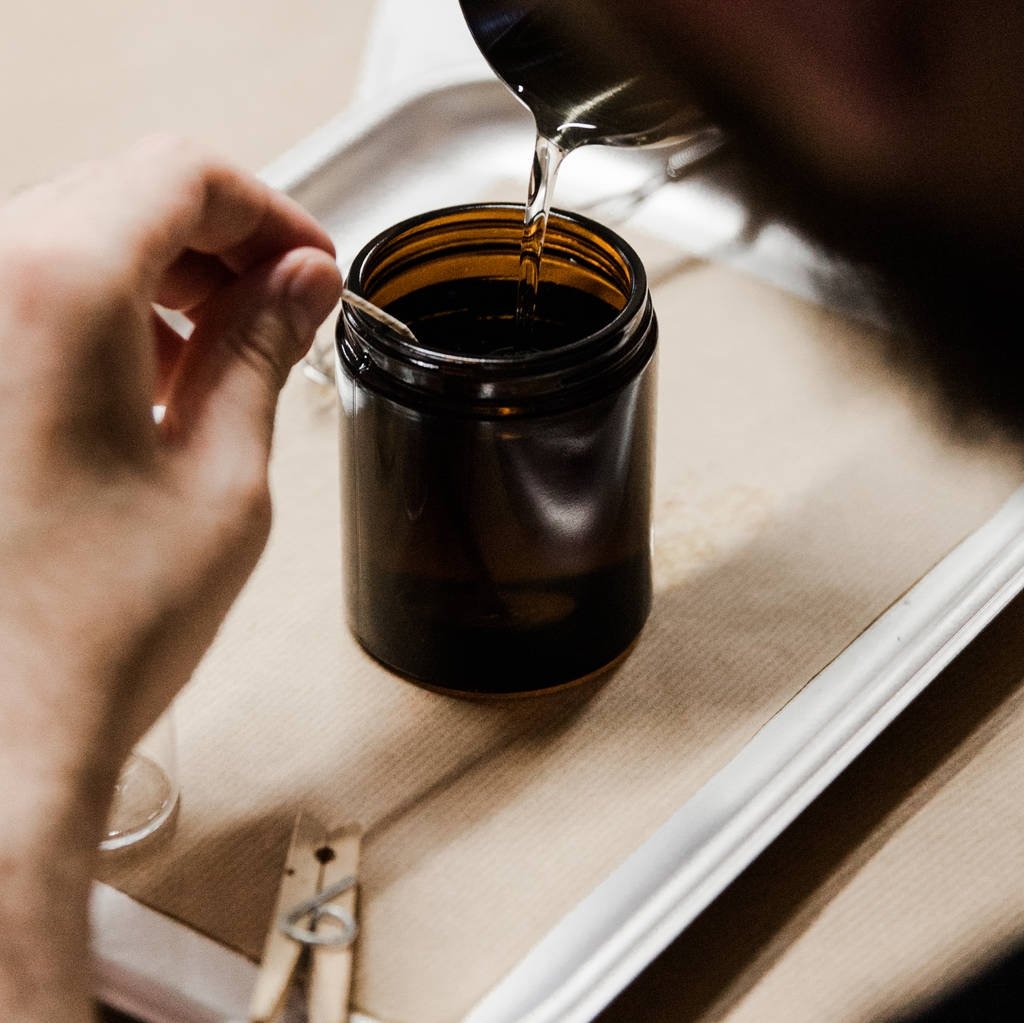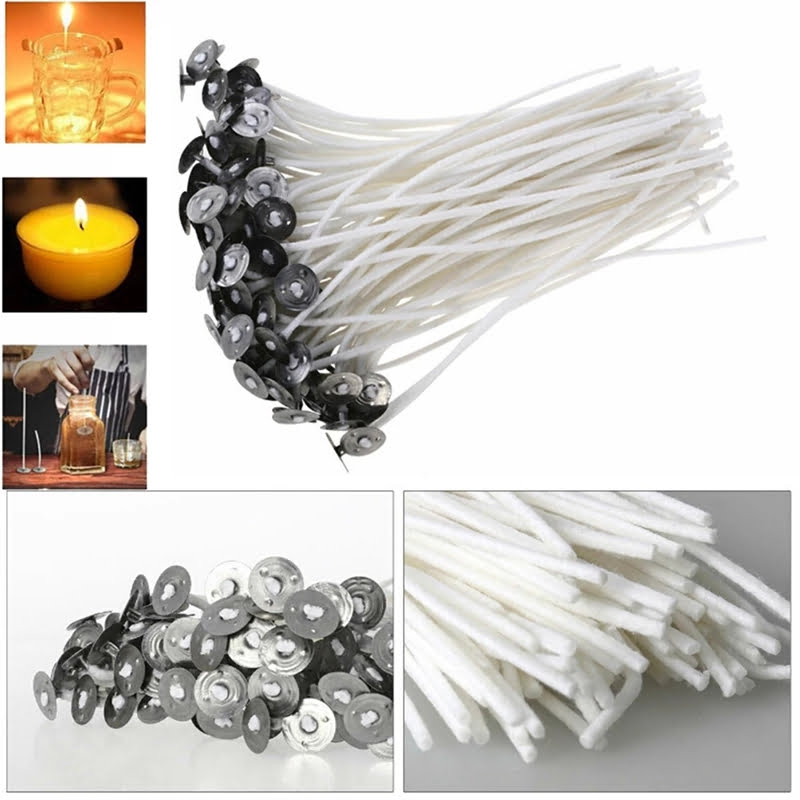Candles have long been cherished for their beauty, warmth, and ability to create a cozy atmosphere. But did you know that candle making is not just an art form, but also a therapeutic experience? In this article, we will delve into the world of candle making and explore the various benefits it offers. Additionally, we will focus on the key role that essential oils play in creating exquisite candles.
For centuries, people have turned to candles as a way to illuminate their surroundings and set a calming ambiance. However, modern-day candle making has evolved beyond just providing light. It has become an opportunity for individuals to express their creativity and craft unique pieces that reflect their personal style.
Beyond the artistic aspect, there are numerous benefits associated with candle making. From reducing stress and anxiety to promoting relaxation and mindfulness, creating candles can be a wonderful outlet for self-expression and self-care. By introducing essential oils into the process, these benefits are further amplified.
Essential oils are highly concentrated plant extracts that are renowned for their aromatic properties and therapeutic effects. When incorporated into candles, they not only infuse delightful scents but also offer various health benefits. Whether you seek calmness from lavender or invigoration from citrus blends, essential oils allow you to tailor your candles based on your desired mood or intention.
In the following sections of this article, we will delve deeper into the power of essential oils in candle making. We will take an in-depth look at some of the top essential oils used in this process, including lavender, chamomile, orange, lemon, eucalyptus, peppermint, rose, and jasmine. Furthermore, we will explore how these oils can be combined to create signature scents that suit your individual preferences.
But before diving into these aromatic adventures and DIY recipes involving essential oils in candle making, it is crucial to understand safety considerations when working with these potent substances. Dilution ratios and proper usage guidelines are essential to ensure safe and enjoyable candle making experiences. So let’s get started on this fragrant journey, uncovering a whole new world of possibilities in candle making with essential oils.
Understanding the Power of Essential Oils in Candle Making
Essential oils have been used for centuries in various therapeutic practices, and they bring a whole new level of power and benefits to the art of candle making. Understanding the power of essential oils in candle making allows you to not only create beautiful candles but also enhance the atmosphere and promote well-being in your space.
One of the main benefits of using essential oils in candles is their ability to provide aromatherapy. Aromatherapy is the practice of using scents to influence mood, emotions, and overall well-being. When essential oils are incorporated into candle wax, they release their natural fragrance when the candle is lit, filling the room with delightful scents that can uplift, relax, or even energize.
In addition to their pleasing scents, essential oils also offer various therapeutic properties when used in candles. For example, lavender essential oil is known for its calming and stress-relieving properties, making it perfect for creating a soothing atmosphere in your home or during meditation or yoga sessions. Chamomile essential oil has a similar effect with its calming aroma and can help promote better sleep quality.
By understanding how essential oils can impact mood and well-being, candle makers can choose specific oils that align with their desired ambiance or intention for each candle they create. With so many different types of essential oils available, each one carrying its own unique scent profile and benefits, the possibilities for creating personalized candles are endless.
Exploring the Top Essential Oils for Candle Making
Lavender essential oil is one of the most popular choices for candle making due to its soothing and calming properties. It has a sweet and floral aroma that can create a relaxing ambiance in any space. When used in candles, lavender essential oil can promote sleep, reduce stress and anxiety, and even help with headaches and insomnia.
To incorporate lavender essential oil into your candle making process, start by choosing a high-quality oil that is specifically labeled for aromatherapy or fragrance purposes. This ensures that the oil is safe to use in candles and will provide the desired scent when lit. It is important to note that not all essential oils are suitable for use in candles, as some may have a lower flashpoint or may react negatively with heat.
When adding lavender essential oil to your candle wax, it is recommended to use about 1 ounce of essential oil per pound of wax. This ratio can be adjusted based on personal preference and desired fragrance intensity. To mix the essential oil into the wax, melt the wax using a double boiler method and then remove it from heat before adding the essential oil. Stir well to ensure that the oil is evenly distributed throughout the wax.
Once you have added lavender essential oil to your candle wax, pour it into your chosen candle vessel or mold and allow it to cool and solidify completely before lighting. When burning your lavender-scented candles, be sure to trim the wick to about ¼ inch before each use to prevent excessive smoking or flickering. Enjoy the calming aroma of lavender as you relax and unwind in the comforting glow of your homemade candles.
Harnessing the Calming Aromatherapy
Chamomile essential oil is known for its calming properties and is often used in aromatherapy to promote relaxation and reduce anxiety. When used in candle making, chamomile essential oil can create a soothing atmosphere and enhance the overall experience of burning the candle.
Chamomile essential oil is derived from the flowers of the chamomile plant through a process of steam distillation. It has a sweet, floral scent with subtle notes of apple or pineapple, which makes it a popular choice for creating candles that promote tranquility and stress relief.
One of the key benefits of using chamomile essential oil in candles is its ability to help calm the mind and promote a restful night’s sleep. The scent of chamomile has been shown to have sedative effects on the body, helping to reduce feelings of insomnia and improve sleep quality.
In addition to its calming properties, chamomile essential oil also has anti-inflammatory and antibacterial properties. This makes it beneficial for those who suffer from respiratory issues or allergies, as it can help soothe inflamed airways and kill airborne bacteria.
When incorporating chamomile essential oil into your candle making process, it’s important to consider proper usage and dilution. Essential oils are highly concentrated substances that should be handled with care. A general rule of thumb is to use about 30 drops (or 1-2% concentration) of essential oil per 1 pound of wax when making candles.
Overall, chamomile essential oil is a versatile option for candle making due to its calming properties and pleasant aroma. Whether you’re looking to create a relaxing ambiance in your home or enjoy the therapeutic benefits of aromatherapy, adding chamomile essential oil to your candle creations can provide an extra touch of tranquility.
Adding a Citrus Burst
When it comes to creating candles with a vibrant and refreshing aroma, citrus essential oils are an excellent choice. Orange and lemon essential oils not only add a delightful citrus burst to your candles but also offer several benefits that make them popular choices among candle makers.
Orange essential oil brings a bright and uplifting scent to your candles. It is known for its energizing and mood-lifting properties, making it perfect for creating candles that promote a positive atmosphere and boost your mood. Additionally, orange essential oil can help combat stress and anxiety, making it an ideal choice for relaxation during meditation or yoga sessions.
Lemon essential oil is another fantastic option for adding a citrus burst to your candles. Its invigorating scent helps create an atmosphere of freshness and cleanliness. Not only does lemon essential oil bring a delightful aroma to your candles, but it also possesses antiviral and antibacterial properties, making it useful for purifying the air in your space.
To incorporate these citrus essential oils into your candle making process, you can follow some simple steps. Start by selecting high-quality orange or lemon essential oil that is specifically designed for candle making. Then, determine the appropriate amount of essential oil based on the size of the candle you are creating – typically about 1 ounce (30 mL) of essential oil per pound (450 grams) of wax.
Next, when preparing your wax blend, add the desired amount of fragrance oil into the melted wax at around 180-185°F (82-85°C). Stir gently to ensure thorough distribution of the fragrance throughout the wax. Note that it is important not to exceed the recommended fragrance load as this can affect the quality and performance of your candle.
Using orange or lemon essential oils in candle making allows you to create exceptional candles with refreshing scents that uplift your mood and create an inviting atmosphere. Whether you want to bring energy and positivity or a sense of freshness and cleanliness to your space, incorporating citrus essential oils can help you achieve the desired ambiance.
| Orange Essential Oil | Lemon Essential Oil |
|---|---|
| Uplifting and mood-lifting properties | Invigorating scent for freshness and cleanliness |
| Helps combat stress and anxiety | Possesses antiviral and antibacterial properties |
| About 1 ounce (30 mL) per pound (450 grams) of wax | About 1 ounce (30 mL) per pound (450 grams) of wax |
Embracing the Therapeutic Scents
Essential oils are not only known for their pleasant aromas but also for their therapeutic benefits. When it comes to candle making, incorporating essential oils can elevate your experience and enhance the ambiance of any room. In this section, we will explore two popular essential oils known for their therapeutic scents: Eucalyptus and Peppermint.
- Eucalyptus Essential Oil: Known for its refreshing and invigorating scent, eucalyptus essential oil is a fantastic choice when creating candles for relaxation and stress relief. Its aroma has a cooling effect that can clear the mind and promote mental clarity. Eucalyptus oil can also help relieve congestion, making it perfect for candle-making during the cold and flu season. When added to candles, eucalyptus oil creates an atmosphere of calmness and rejuvenation.
- Peppermint Essential Oil: The cooling and uplifting scent of peppermint essential oil makes it a popular choice in candle making. Not only does it add a refreshing aroma to any space, but it also has various therapeutic properties. Peppermint oil is often used to alleviate headaches, soothe muscle pain, improve focus, and boost energy levels. When using peppermint essential oil in your candles, you can create an environment that promotes alertness and concentration.
When incorporating eucalyptus or peppermint essential oils into your candle-making process, there are a few important factors to consider:
- Dilution: Essential oils should be properly diluted before adding them to your candle wax. It’s recommended to use about 1 ounce of essential oil per pound of wax.
- Testing: Before committing to larger batches of candles, it’s important to test the scent throw and performance of your chosen essential oils in small sample candles.
- Blending: If you’re feeling adventurous, you can experiment with blending eucalyptus and peppermint essential oils together or with other compatible scents to create your own unique aroma.
Embracing the therapeutic scents of eucalyptus and peppermint essential oils in your homemade candles can transform any space into a soothing and rejuvenating sanctuary. Their refreshing and invigorating aromas not only elevate the ambiance but also provide numerous benefits for your well-being. So why not harness the power of these essential oils in your candle making?
Unleashing the Soothing Floral Aromas
Rose and jasmine essential oils are two popular choices for candle making due to their soothing floral aromas. These oils add a touch of elegance and romance to any space, creating a calming and relaxing atmosphere. Here, we will explore the benefits and properties of rose and jasmine essential oils, as well as how to incorporate them into your homemade candles.
The Benefits of Rose Essential Oil
Rose essential oil is known for its rich, floral scent that is both uplifting and comforting. It is often used in aromatherapy to relieve stress, anxiety, and depression. The aroma of rose can also promote feelings of love, joy, and tranquility.
In candle making, adding rose essential oil can create a luxurious and romantic ambiance in your space. Its elegant fragrance can help reduce tension, improve mood, and promote relaxation. Rose essential oil blends well with other scents like lavender or geranium to create unique combinations that suit your personal preferences.
Using Jasmine Essential Oil in Candle Making
Jasmine essential oil is derived from the petals of the jasmine flower through a delicate extraction process. Its sweet and exotic fragrance has been used for centuries in perfumes, skincare products, and candles. In candle making, jasmine essential oil adds a beautiful floral scent that helps create a serene environment.
The aroma of jasmine is believed to have various therapeutic effects on the mind and body. It is commonly used in aromatherapy to uplift mood, reduce anxiety, and promote relaxation. When incorporated into candles, jasmine’s intoxicating scent can fill the room with an inviting ambiance that encourages tranquility.
Incorporating Rose and Jasmine Essential Oils into Homemade Candles
To use rose or jasmine essential oils in candle making, start by choosing high-quality oils specifically designed for this purpose. Begin with a small test batch before making larger quantities to ensure you achieve the desired scent strength.
When adding essential oils to your candle wax, it is important to consider the appropriate ratio. Generally, a good starting point is adding about 1 ounce of essential oil per pound of wax, but this can be adjusted based on personal preference and desired scent intensity. Remember to always follow safety guidelines and recommendations for candle making.
To incorporate rose or jasmine essential oils into your candles, melt the wax according to your chosen recipe or method. Once the wax reaches the desired temperature, carefully add the essential oil and stir gently but thoroughly to ensure even distribution. Pour the fragranced wax into your chosen candle molds or containers and allow it to cool and solidify before trimming the wick and lighting the candle.
In summary, rose and jasmine essential oils are exceptional choices for creating sooth floral aromas in homemade candles. Their luxurious scents provide a sense of tranquility and relaxation, making them perfect for creating an inviting atmosphere in any space. By following proper guidelines for dilution and usage, you can enjoy the therapeutic benefits of these essential oils while indulging in the art of candle making.
Mixing and Matching
One of the most exciting aspects of candle making is the opportunity to create unique and customized scents. Essential oils play a crucial role in achieving this, as they offer a wide range of fragrances that can be combined to create your own signature scent. By mixing and matching different essential oils, you can unleash your creativity and design a candle that perfectly suits your preferences.
To begin with, it’s important to have a basic understanding of fragrance blending. There are three main categories of scents: top notes, middle notes, and base notes. Top notes provide the initial impact when the candle is first lit, middle notes emerge after the candle has been burning for a while, and base notes linger on even after the candle has been extinguished.
When creating your signature scent, consider using essential oils from each category to achieve depth and complexity in your fragrance. For example, you might combine citrus top notes like lemon or orange with floral middle notes like rose or jasmine, and finish off with woody base notes such as cedarwood or sandalwood.
To help guide you in mixing essential oils for your candles, here are some examples of popular combinations:
- Fresh and Clean: Mix equal parts of lavender, lemon, and eucalyptus essential oils for a refreshing scent that promotes relaxation.
- Warm and Cozy: Blend cinnamon, vanilla, and patchouli essential oils to create a comforting aroma that is perfect for cozy nights at home.
- Floral Paradise: Combine rose geranium, ylang-ylang, and bergamot essential oils for an enchanting floral bouquet that brings a touch of elegance to any space.
Remember that when mixing essential oils for candle making, it’s important to test small quantities first before committing to larger batches. This will allow you to adjust the ratios if needed until you find the perfect balance of scents.
Creating your own signature scent with essential oils adds a personal touch to your candle making journey, allowing you to express your individuality and create a truly unique product. So, don’t be afraid to experiment and discover the perfect combination that speaks to you.
Safety Considerations
Proper usage and dilution of essential oils in candle making is crucial for both the safety of the user and the quality of the final product. It is important to understand that essential oils are highly concentrated extracts that can be potent and potentially harmful if not used correctly. Therefore, it is essential to follow safety guidelines when incorporating essential oils into your candle making process.
Choosing High-Quality Essential Oils
When selecting essential oils for candle making, it is important to choose high-quality oils from reputable sources. Look for oils that are 100% pure and have been tested for purity and authenticity. Avoid purchasing synthetic or adulterated oils as they may not only produce inferior scent but also pose health risks.
Diluting Essential Oils
Essential oils need to be diluted before being added to candles. This not only ensures a proper scent throw but also reduces the risk of skin irritation or sensitization. The general rule of thumb is to use about 1 ounce (30 milliliters) of fragrance oil per pound (450 grams) of wax.
However, this ratio may vary depending on the specific oil and personal preference. It is recommended to refer to the guidelines provided by the essential oil manufacturer for proper dilution ratios.
Adding Essential Oils Safely
To add essential oils safely, wait until the wax has cooled down slightly after melting, but before pouring it into the candle container or mold. This will prevent heat from negatively affecting the volatile compounds in the oils. Stir gently with a thermometer or glass stirring rod during fragrance incorporation to ensure even distribution.
Avoid Overloading Candles with Essential Oils
While it may be tempting to add a large amount of essential oil for a stronger scent throw, it is important not to overload your candles with fragrance. Adding too much oil can cause your candle to burn improperly, produce excessive smoke, and even become a fire hazard. It is best to start with the recommended dilution ratio and adjust accordingly based on personal preference.
By following these safety considerations and proper usage guidelines, you can incorporate essential oils into your candle making process safely and effectively. Remember to always consult the specific recommendations provided by the essential oil manufacturer for optimal results.
DIY Candle Making Recipes
Incorporating essential oils into your candle making process can elevate the entire experience. Not only do these oils add delightful scents to your creations, but they also provide numerous benefits for both your mind and body. Now that you have explored the top essential oils for candle making, it’s time to learn how to incorporate them into your own DIY candle recipes.
To begin, gather all the necessary materials for candle making, such as wax, wicks, containers, and fragrance oils. Once you have everything ready, follow these step-by-step instructions to create your personalized scented candles:
- Melt the wax: Begin by melting the wax using a double boiler or a microwave-safe container. Stir occasionally until it becomes fully liquid.
- Add essential oils: Once the wax has melted completely, it’s time to incorporate your chosen essential oils. Remember to follow proper usage and dilution guidelines based on the specific oil you are using.
- Mix well: Stir the melted wax and essential oils together thoroughly to ensure that the scent is evenly distributed throughout.
- Prepare containers: While waiting for the wax to cool slightly, prepare your candle containers by inserting a wick in the center of each one.
- Pour the wax: Carefully pour the scented wax into each container, ensuring that the wick remains in place.
- Let it set: Allow your candles to cool and solidify completely before moving them or lighting them up.
By following these simple steps, you can create beautiful scented candles with customizable aromas that suit any occasion or mood. Experiment with different combinations of essential oils to find your signature scent and enjoy the therapeutic benefits they offer.
Remember always to prioritize safety when working with essential oils in candle making. Keep in mind proper usage guidelines and dilutions for each oil and avoid overheating or leaving candles unattended. With knowledge and caution, you can create stunning scented candles that bring comfort, relaxation, and a touch of personal style to any space. Happy candle making.
Frequently Asked Questions
Can you use any essential oil for candle making?
While it is possible to use any essential oil for candle making, not all oils are suitable for this purpose. When selecting an essential oil for candle making, it is important to consider its flash point, which is the temperature at which the oil can ignite. Some essential oils have low flash points and can be dangerous when used in candles.
It is recommended to choose essential oils with higher flash points such as lavender, lemongrass, eucalyptus, or peppermint. Additionally, it is crucial to use high-quality and pure essential oils that are specifically labeled as safe for candle making.
What essential oils make candles smell stronger?
If you want your candles to have a stronger scent, there are several essential oils that are known for their strong and long-lasting aromas. Essential oils such as cinnamon, clove, patchouli, vetiver, and sandalwood are famous for their potent fragrances and can help make your candles smell stronger.
These oils tend to have a rich and intense aroma that can fill a room even when used in small amounts. However, it is important to exercise caution when using these oils as they can also be overpowering if too much is added.
What are the best essential oils for soy wax candles?
Soy wax candles are popular among individuals seeking natural and eco-friendly options for home fragrance. When choosing essential oils for soy wax candles, it is crucial to consider both the scent throw and compatibility with soy wax. Essential oils that work well with soy wax include lavender, lemongrass, vanilla, bergamot, or citrus-based scents like orange or grapefruit.
These oils blend well with the natural qualities of soy wax and provide a pleasant aroma when burned. It’s always advisable to test different combinations of essential oils in small batches before settling on the ones that best suit your preferences and desired strength of scent in soy wax candles; this allows you to find the perfect balance between fragrance intensity and burn time in your creations.

Welcome to my candle making blog! In this blog, I will be sharing my tips and tricks for making candles. I will also be sharing some of my favorite recipes.





